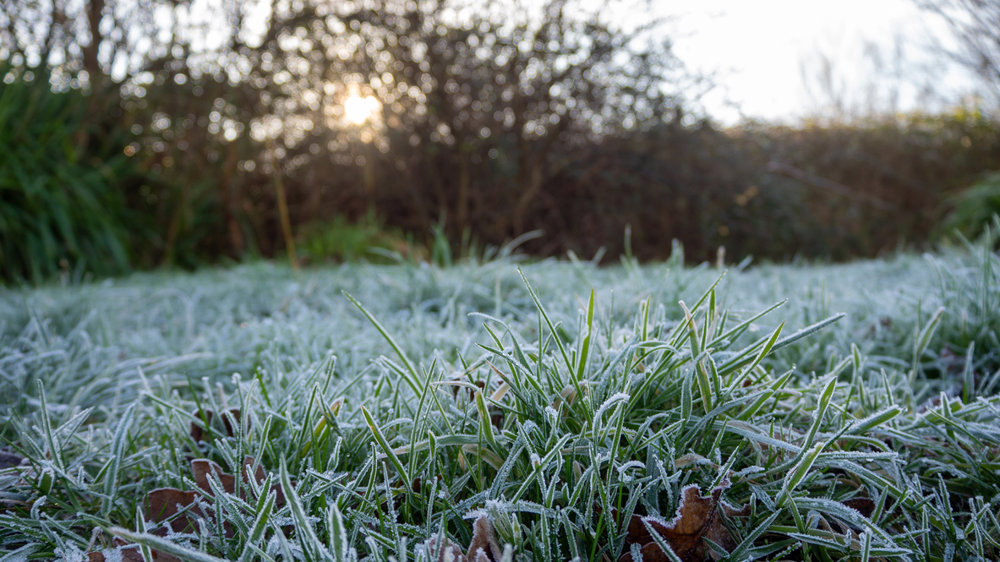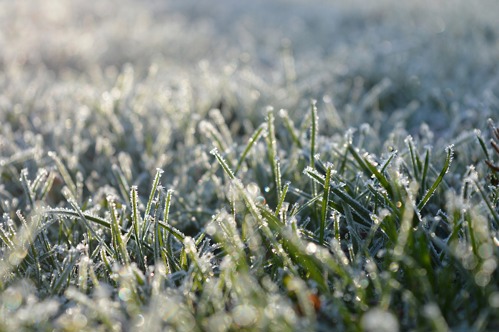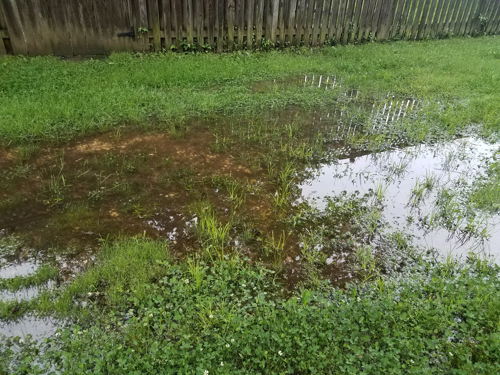How to weatherproof a lawn and protect it from flood, frost and drought
7 Feb Landscaping & Turfcare
When it comes to landscaping, achieving the best results often comes down to managing a delicate balance between nature and nurture to make sure clients' green spaces continue to look their best year-round.
As weather patterns continue to change with the seasons and climate, challenges such as flooding, drought and frost have become a formidable foe for those entrusted to maintain outdoor spaces.
For professional landscapers, having a solid weatherproofing plan for whatever weather may come your way is essential to protecting green spaces against damage from the elements.
How increased flooding can impact your landscape
El Niño is a term that landscapers have become all too familiar with over the past year, and according to the Copernicus Climate Change Service (C3S), the weather phenomenon will continue to affect winter conditions in 2024, with central and eastern Europe particularly likely to face increased precipitation levels.
The result? More rainfall events and a higher probability of flooding and waterlogging on lawns and grounds. For those that are new to landscaping or would like a quick reminder, here are some of the best ways to protect against heavy rainfall.
How to protect a lawn from flooding
Prevent compaction
Compacted soil is a key culprit for leaving grounds vulnerable to flooding, as the compression of soil from machinery and foot traffic reduces pore space and limits water absorption. The good news is a well-timed aeration schedule means landscapers can get ahead of a flooded lawn before it happens.
Aeration, spiking, slitting or coring the soil during the autumn or even spring season can break up the compaction that grounds may have suffered during the summer. Perforating the soil with tines (prongs) helps improve water and air movement, enhancing drainage and ensuring grass roots continue to have access to the nutrients they need.
Core aeration in particular, where plugs of soil are removed from the ground via machine, is recommended when preparing grounds against flooding, as it facilitates better drainage while reducing thatch build-up that may exacerbate the issue by preventing water movement.
Aerating in this way will also encourage the development of deeper root systems that can prevent drought later down the line – something we'll get to shortly!
Managing waterlogged grounds
If your clients' lawns have been a victim of flooding and you're called in for damage control there are a number of steps you can take to get their gardens back into shape.
- Give the water time to evaporate and advise clients to refrain from venturing onto the grass where possible.
- Once the surface water has dispersed, create drainage holes by puncturing the soil with a fork – using a hollow tine aerator will also help to remove any clumps of waterlogged soil that may remain.
- Use top soil or sand to absorb any remaining moisture and level damaged areas.
- If any grass has died when it comes to spring make sure to overseed so that it's back to its best by summer.
What is the impact of frost on lawns?

It may create a beautiful winterscape but the frost that forms on those crisp nights can wreak havoc on landscapes, inducing winter dormancy in some young plants and wiping others out completely.
Formed when the temperature of grass, trees and shrubs drops below the temperature of the air, frost freezes and expands the water inside plants and blades of grass which can rupture the plant's cell walls during the rapid thawing process.
The freezing of the water within the grass can also dehydrate the plant cells, making them more susceptible to injury, with persistent frost causing cumulative harm that leads to browning, wilting, and even death of the grass in extreme cases. It's particularly detrimental to more tender plants and young, actively growing grass. Additionally, repeated frost events without recovery periods can contribute to long-term stress on the turf.
The best solution to encouraging a frost-resistant outdoor space is planting grasses and plants that are reliably hardy, avoiding tender perennials and moving vulnerable plants into a sheltered position.
However that's not always possible – you certainly can't move an entire lawn indoors! Instead try these techniques to weatherproof green spaces against frost.
How to protect a lawn from frost
While snow can act as a natural protective blanket to grass (providing it is undisturbed), frost can damage and weaken a lawn over time. Here’s a quick refresh on best practices for dealing with frost.
Opt for a taller cut
During the autumn months and heading into winter, implementing proper mowing practices is paramount, and maintaining a strategic balance is essential.
When weather permits, continuing to mow through the winter undoubtedly discourages the proliferation of disease and reduces the risk of pests. However, it's important not to cut the lawn too short if you run your business in an area where temperatures may drop below zero.
Long grass blades act as a natural insulator for your clients' lawns, shielding the soil and roots from extreme temperatures and frost damage. This layer of natural protection will leave their green spaces more robust and able to withstand the challenges posed by cold weather and environmental stressors.
Add extra protection
If clients have young grass or seedlings, covering the lawn with a horticultural fleece or even bubble wrap, blankets or organic material will help to insulate it and provide winter protection.
Avoid using straw as insulation as it can carry weed seeds, or plastic tarps, as they may cause further damage to the grass beneath if it freezes and stiffens.
How can landscapers protect grounds from drought?
The key to outsmarting drought lies in proactive preparation, setting the stage for clients' grounds to weather summer heatwaves successfully. Making sure the lawn is robust and ready involves early-year groundwork, cultivating a healthy, vigorously growing lawn with deep, well-established roots.
Mow frequently

In the event of a drought where ground surfaces become dry, a shallow root system can prevent your clients' grass from reaching the nutrients it needs to survive and leave the roots close to the surface suffering from heat stress.
Part of weatherproofing outdoor spaces against drought means maintaining a healthy lawn year-round that encourages dense and deep-rooted grass that is better able to withstand periods of dry weather.
This means mowing frequently using quality machinery such as a Powered by Kawasaki mower. By mowing frequently with the proper equipment, landscapers can promote lateral growth and the allocation of energy to root development, ensuring roots grow deep enough to access the moisture stored in the lower soil layers should water become scarce.
Remember to cut back on mowing frequency once the drought season starts however, as grass is made up of 85 percent water – by removing length you could be removing vital nutrients.
Keep grass longer
In peak season, you will be mowing with increasing regularity, but you should be careful to gradually increase the mowing height each time until it's towards the higher end of the recommended mowing height for your client's grass type.
Tall grass helps to keep soil cool and shaded as temperatures start to increase, slowing evaporation and retaining moisture during a heatwave. Leaving clippings on the lawn to act as a natural mulch will also help to weatherproof against drought as they will slow evaporation from the soil surface.
Use drought-resistant grass varieties
Besides keeping up with a well-rounded lawn care schedule, you can protect grounds from the heat by choosing a grass variety designed with drought tolerance in mind. As summers continue to get hotter in Europe, the need for drought-resistant lawns has increased – if your clients are facing a recurring issue, select resistant grass varieties for extra protection.
For more advice on dealing with heat and summer-related lawn stressors, read our guide to lawn care in the hottest months of the year.
Prepare for all weather
Safeguarding your clients’ gardens against the trio of natural adversaries – flood, frost, and drought – requires a multifaceted approach rooted in strategic planning and attentive care.
By following the advice laid out you can ensure your clients' grounds are prepared for whatever weather may come their way, from extreme heat to extreme cold. But while the weather may change, one thing remains consistent: the absolute necessity of regular landscape maintenance and quality equipment to promote overall lawn health.
Using machines Powered by Kawasaki can help you achieve that goal, delivering a reliable and efficient performance no matter the season. Designed for the professional, our engines have the power required to keep a fast blade through varying turf – meaning cleaner cuts, and healthier lawns.







